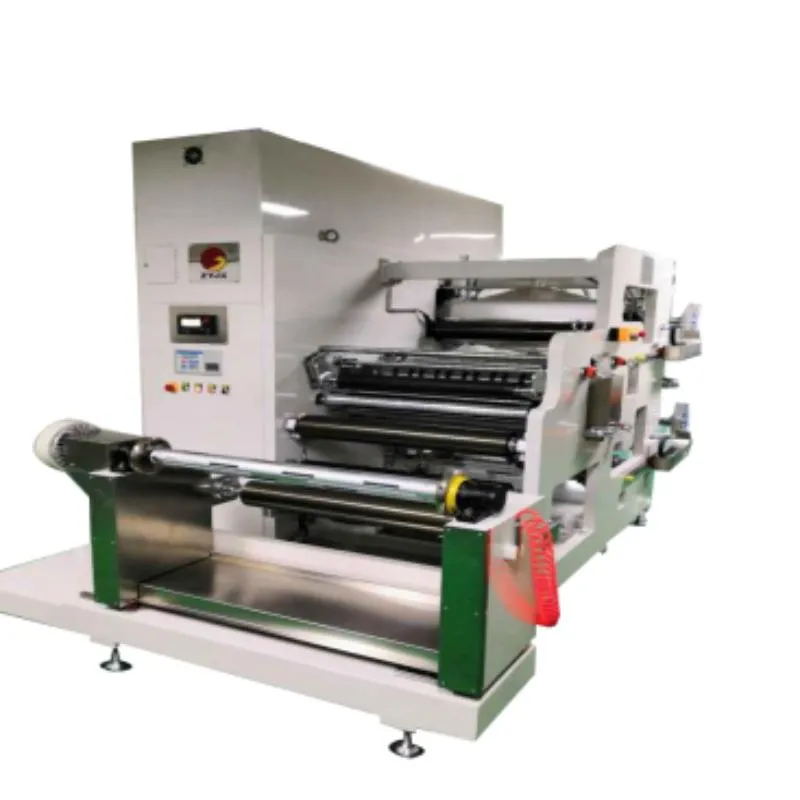Lithium Ion Battery Assembly Machine | Fast & Precise
I spent last week on a factory floor listening to operators argue (politely) about burrs and edge quality—yes, really. The quiet star of the show was a lithium ion battery assembly machine that does one job obsessively well: slit electrode rolls with repeatable precision. Branded as the Fully automatic power slitting machine, model SD600-V600-S50, it comes out of Xingtai, Hebei (Room 1410, No. 119 Zhongxing East Street, Xiangdu District, China) and ships FOB Tianjin. Price? Somewhere between US$10,000 and US$500,000 per set, depending on how far you push customization. Lead time is typically 4–8 weeks; payment via TT/T. Sensible, no drama.

Why slitting still decides pack reliability
Electrode slitting isn’t glamorous, but it’s where defects start—or don’t. As EV makers chase thinner foils and higher line speeds, the tolerance stack tightens. Burr height, edge melt, and foil tension uniformity quietly determine your yield downstream (stacking/winding, lamination, formation). Many customers say the right slitter bought them +2–4% OEE without touching the rest of the line; I’ve seen similar.
Key specifications (real-world, not brochure-speak)
| Model | SD600-V600-S50 (Fully automatic power slitting machine) |
| Applicable materials | Al/Cu coated electrodes (NMC/NCA/LFP cathodes; graphite/silicon anodes), separator films |
| Max web width | ≈ 600 mm |
| Line speed | Up to ≈ 120 m/min (real-world use may vary with coating/foil) |
| Cut accuracy | ±0.05 mm typical; burr height |
| Tension control | Closed-loop 5–80 N, multi-zone |
| Roll OD / Core | Unwind ≤ Ø600 mm; Core ID 3"/6" |
| Power / Footprint | ≈ 12–18 kW; footprint ≈ 3.5 m × 1.8 m |
| OEE & life | OEE up to ≈ 92% with PM; service life ≈ 8–12 years |
Process flow and in-line checks
- Unwind with EPC edge-guiding; humidity control for dry-room integration (ISO 14644-1).
- Knife setup (shear or crush cut); gap and overlap calibration, quick-change cassettes.
- Slitting and vacuum scrap extraction; anti-static bars to reduce particle redeposit.
- In-line vision: edge tracking, burr detection, splice logging; MES tags via OPC UA.
- Rewind with tension profiling; roll density measurement.
Typical QC: burr height per internal spec (often ≤10–15 μm), edge rag evaluation, coating shift ≤±0.1 mm, peel adhesion spot-checks. While cell safety standards sit downstream (IEC 62133-2, UL 1642, UN 38.3), tight slitting helps you pass them by preventing particle shorts and tab misalignment later.
Where it’s used
Automotive (IATF 16949 environments), stationary energy storage, power tools, and premium consumer cells. I guess you could push it for dry-electrode trials too—several teams are doing that quietly.
Vendor snapshot and options
| Vendor | Strengths | Lead time | Certs | Notes |
|---|---|---|---|---|
| XT ShuoDing (China, Hebei) | Customization, cost/performance | ≈ 4–8 weeks | ISO 9001; CE (machine) | FOB Tianjin; TT/T terms |
| Global brand | Global service network | ≈ 10–20 weeks | CE, UL panels, IATF-ready docs | Higher CAPEX |
| Local integrator | On-site tweaks | ≈ 6–12 weeks | Varies | Good for pilots |
Customization: blade type (shear/crush), vision resolution, solvent capture, safety guarding, dry-room pass-throughs, MES/OPC UA, and recipe libraries. For a lithium ion battery assembly machine this flexible, integration is surprisingly painless.
Field notes and feedback
- Tier-2 EV cell plant cut burr defects by ≈38% after upgrading tension control and vision.
- Energy storage line added quick-change cassettes; changeover fell from 45 to 18 minutes.
- Operator comment: “Edge tracking is boring now—which is the point.”
Certifications and compliance: ISO 9001 factory management, CE machine safety; documentation packages to support IATF 16949 audits; electrical panels can be UL-listed on request. All this fits neatly into a modern lithium ion battery assembly machine environment aiming at global shipments.
Bottom line: if you’re tightening tolerances for EV or ESS, this slitter is a pragmatic upgrade. Order is 1 set minimum; ship from Tianjin; pay via T/T; and, to be honest, the price-to-yield ratio is hard to ignore.
References
- IEC 62133-2:2017 — Safety requirements for portable sealed secondary lithium cells and batteries. https://webstore.iec.ch
- UL 1642 — Lithium Batteries. https://ul.com
- UN Manual of Tests and Criteria, Section 38.3 (UN 38.3). https://unece.org
- ISO 14644-1 — Cleanrooms and associated controlled environments. https://www.iso.org
Share
-
Lithium Battery Welding Machine | High-Precision, Fast, SafeNewsNov.17,2025
-
Aluminium Guide Roller | Anodized, Lightweight, Low-NoiseNewsNov.17,2025
-
Tofu Cat Litter Bulk – Eco, Low-Dust, Fast Clumping SupplyNewsNov.17,2025
-
Equipment for Lithium Cell Assembly | Automated & PreciseNewsNov.10,2025
-
Square File Tool – Precision Cut, Hardened Steel, VersatileNewsNov.10,2025
-
Lithium Ion Battery Assembly Machine | Automated, High-SpeedNewsNov.10,2025







